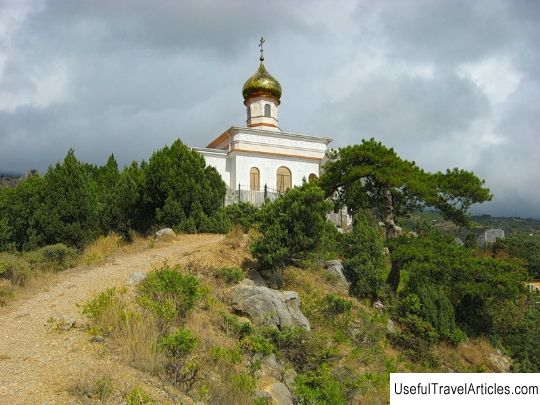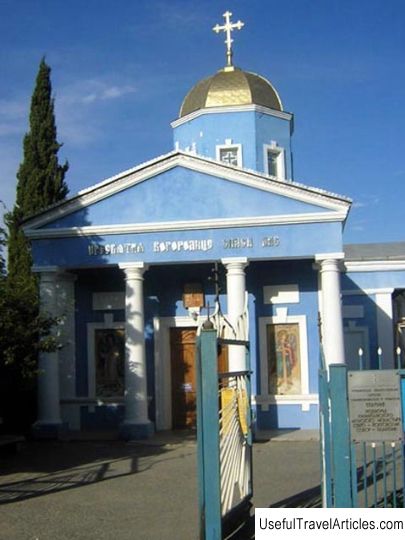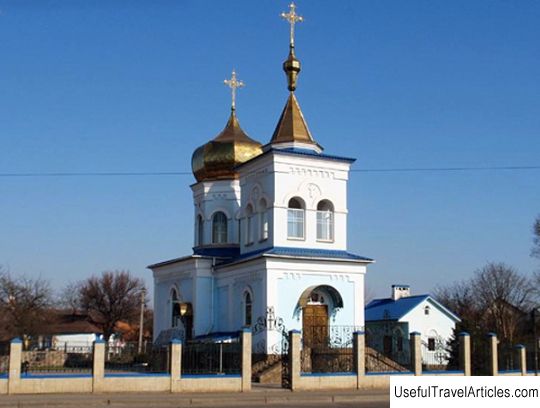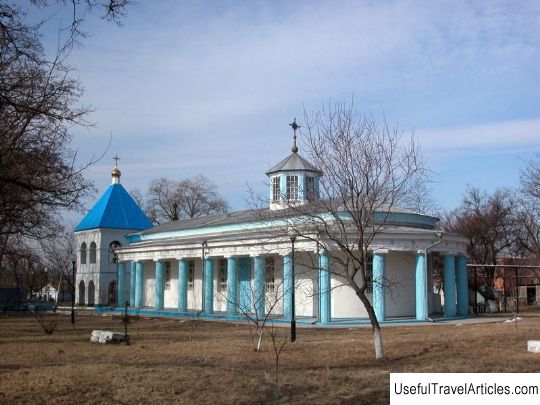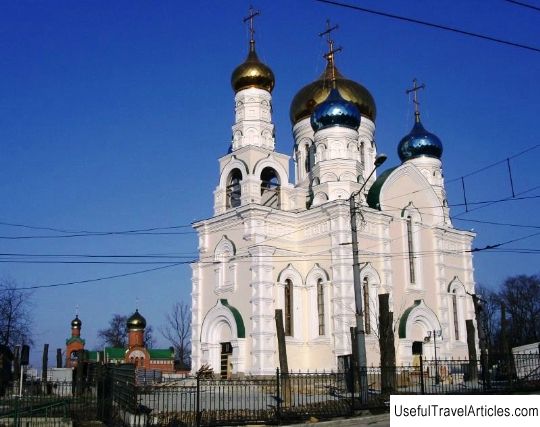Church of the Intercession of the Most Holy Theotokos description and photos - Crimea: Livadia
Rating: 8,4/10 (900 votes) 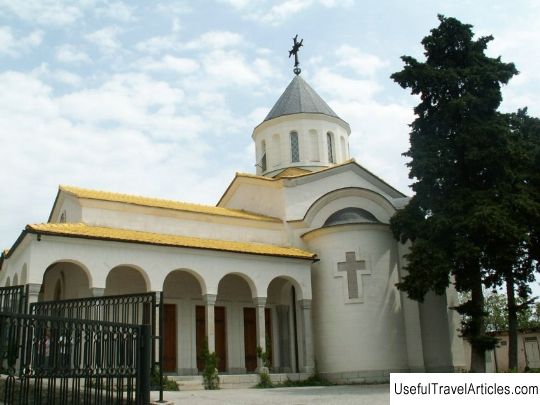
Church of the Intercession of the Blessed Virgin Mary description and photos - Crimea: Livadia. Detailed information about the attraction. Description, photos and a map showing the nearest significant objects. Photo and descriptionA luxurious royal residence of Nicholas I was built in Oreanda in 1852, surrounded by a stunning park; the author of the project was A.I. Stackenschneider. Subsequently, this palace was inherited by Konstantin Nikolayevich, the second son of Nicholas I, who loved this place very much. The Grand Duke independently chose a place for the future temple. At the base of the foundation of the church, during its solemn laying, a plaque was placed with the inscription that this temple was being built with the diligence of the Grand Duke Konstantin Nikolaevich for the Protection of the Most Holy Theotokos on April 31, 1884. The name of the temple was also chosen by the prince himself - in honor of his favorite holiday. The Grand Duke was an educated man, had many hobbies, among which was architecture. He decided to build the temple in the Georgian-Byzantine style, since, in his opinion, it was best suited for the rocky and rugged terrain of Oreanda. The eminent architect A.A. Avdeev. It was decided to build the church not far from the Admiral's house, which was surrounded by large oak trees. In order for the apse of the temple to be oriented to the east, it was necessary to remove several oak trees, but the Grand Duke did not want to destroy the mighty giants and the altar of the temple was slightly turned to the southeast. In the construction of the church, stones were used that once served as the walls of the palace ... The palace itself had already burned down by that time, only ruins remained. The temple came out small in size, in the shape of a cross and with one dome, in the light drum of which window openings in the form of arches were inserted. The dome was crowned with a bronze-gilded openwork Byzantine cross. An arched gallery is located on three sides of the temple. Outside, the walls are decorated with large crosses made of Carrara white marble in Livorno. The church did not have a bell tower. A kind of belfry was built from an oak tree growing nearby, to which a wooden staircase, a platform from a pair of boards were attached, and 5 bells were hung. The largest bell weighed 160 kg, and the smallest - 3 kg. The bells were consecrated in 1885 on September 21 - the day of memory of Dmitry Rostovsky. The Intercession Church was very richly decorated. Part of the temple was painted by famous artists: D.I. Grimm, G.G. Gagarin, M.V. Vasiliev. According to the drawings of Prince Gagarin, two mosaic icons of the Intercession and the Savior were created by the Italian master Antonio Salviati. They were placed above the upper place and the church porch. The walls of the church, its sails and dome were also decorated with mosaics. The carved iconostasis was made of juniper, cypress, oak and walnut; this was done by master Kubyshko. Yellow-orange glasses let soft sunlight into the temple. The Church of the Intercession was solemnly consecrated in 1885. This temple has become a favorite creation of Konstantin Nikolaevich. After the death of the Grand Duke, Oreanda went to his children, Grand Dukes Constantine and Dmitry. In 1894, Oreanda again became the imperial estate, as it was purchased for the heir to the throne Nikolai Alexandrovich. In 1894, on October 13, St. John of Kronstadt served mass in the Oreanda church, and after serving the liturgy and matins, On October 17, with the Holy Gifts and in full vestments, he went to the ailing Alexander III in the Livadia Palace. Nicholas II and his family visited the Intercession Church, he loved to walk in the local park, admire the beauty of the rocks and meditate by the sea. In the Oreanda temple, A.P. Chekhov. It was here that the heroes from his work "The Lady with the Dog" reflected on life and eternity. The temple had to endure many difficulties after the revolution, as a result of which it was almost destroyed. The church was completely closed in 1924. It was transferred to the jurisdiction of the Committee for the Protection of Antiquities and Art and Museum Affairs, after which - the Office of the Livadia Palace. The most beautiful mosaic frescoes were shown to sightseers. The building was somewhat damaged by the earthquake in 1927, after which a crack appeared in its altar part, which no one repaired. There were attempts to throw off the cross from the temple, but they could not tear it off, since it broke at the base. Today, a fragment of the cross is kept in the church as a precious relic. In the postwar period, a sanatorium began to be built in Oreanda. The architects decided that the small church had lost its relevance to the modern look of Oreanda, and in the early sixties it was decided to demolish it. However, local historians defended the temple and achieved that it was recognized as an architectural monument. For thirty years, pesticides were stored here, and the churchyard served as a motor depot. The church building required restoration, as it was significantly damaged by landslides. After the church was returned to the Orthodox Church in 1992, its restoration began, which was timed to coincide with the Annunciation of the Most Holy Theotokos. The church was put in order by the efforts of the parishioners, and for the first time in a long time, on the feast of the Holy Trinity, the Divine Liturgy was held here. In 2001, a belfry was built next to the church. At the Donetsk enterprise "Korner-M" a wonderful bell was cast, the weight of which is 603 kg. For a beautiful sounding of the voice of the bell, it was made using a real stove, in which the fire was supported by wood. The bell is decorated with four hallmarks depicting the Lord Almighty, the Most Holy Theotokos, St. Nicholas the Wonderworker and the healer Panteleimon. The bell also has an inscription that it was brought as a gift by the Slaves of God Anatoly and Alexander in the summer of 2001. The bell was installed on December 7th, and consecrated on January 4th. After several days, an openwork cross was installed on the roof of the belfry, which was made by the artist from Kiev Oleg Radzevich. The Yalta charitable foundation "Nadezhda" provided great assistance in creating the cross.      We also recommend reading Archaeological Museum (Museo Arqueologico Casa del Marques de San Jorge) description and photos - Colombia: Bogota Topic: Church of the Intercession of the Most Holy Theotokos description and photos - Crimea: Livadia. |
